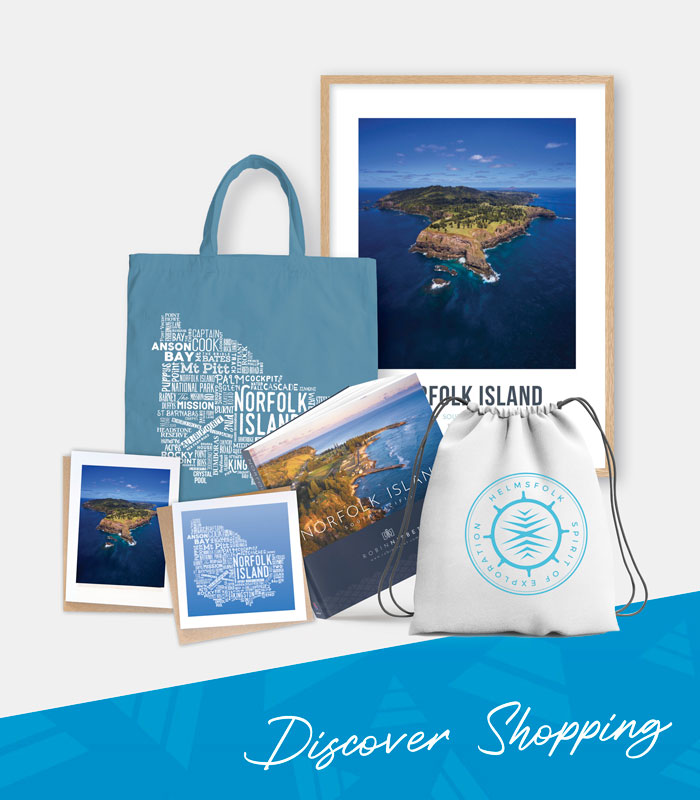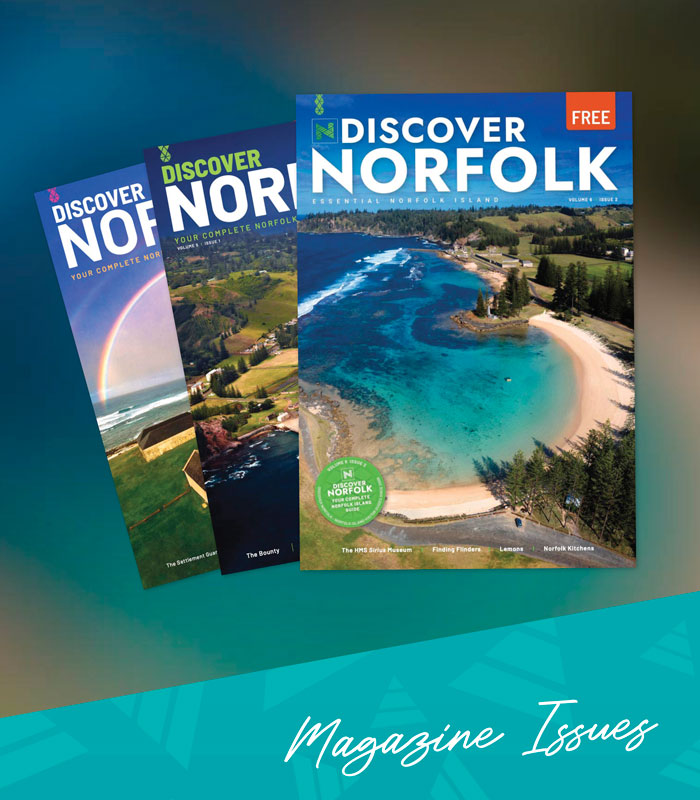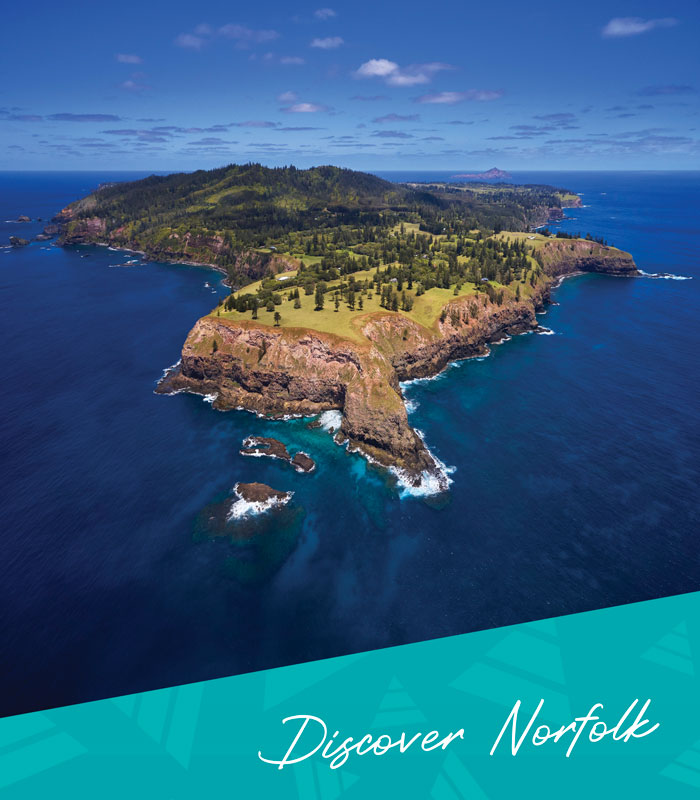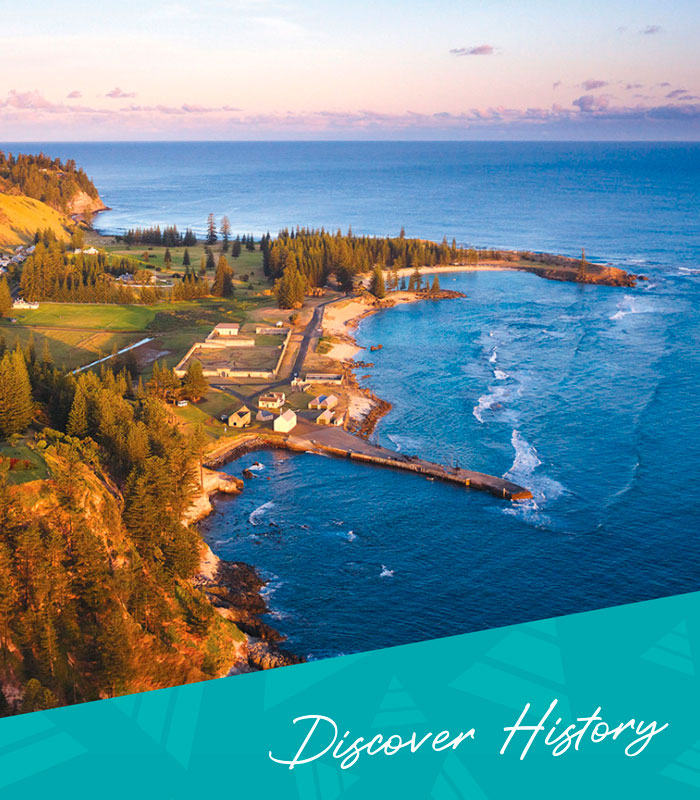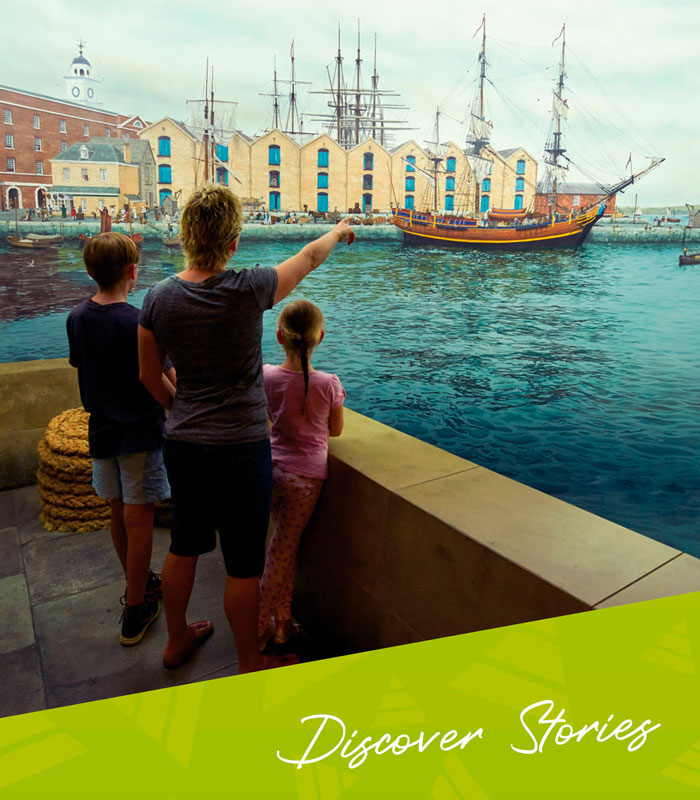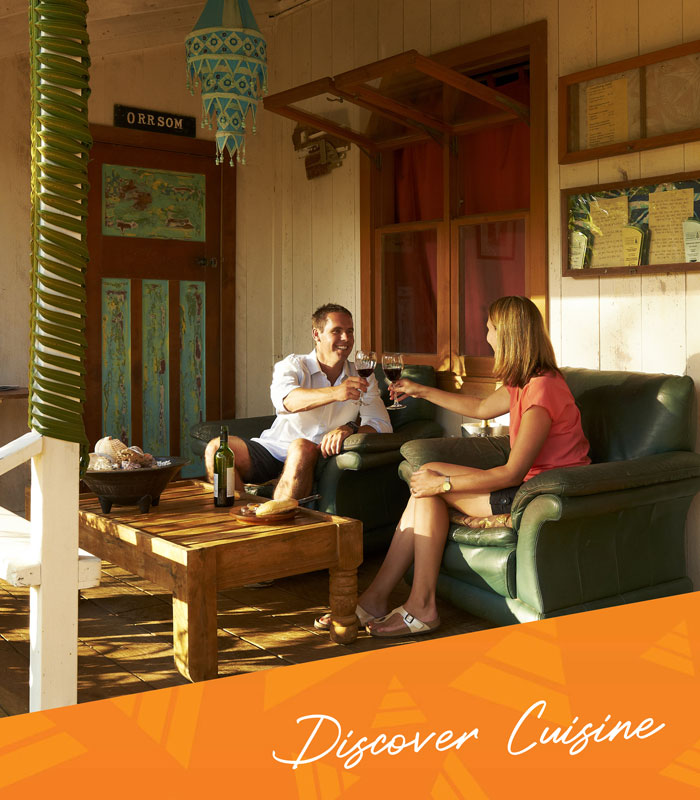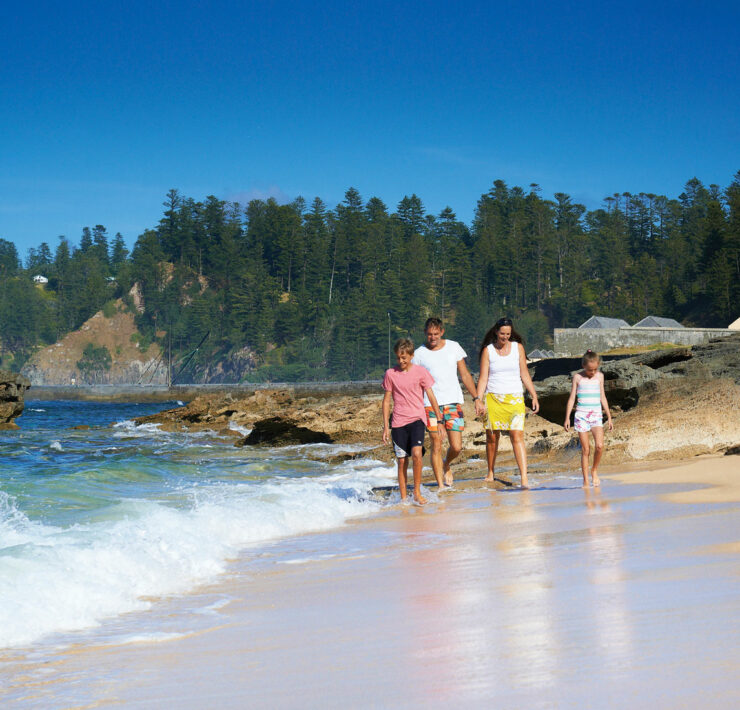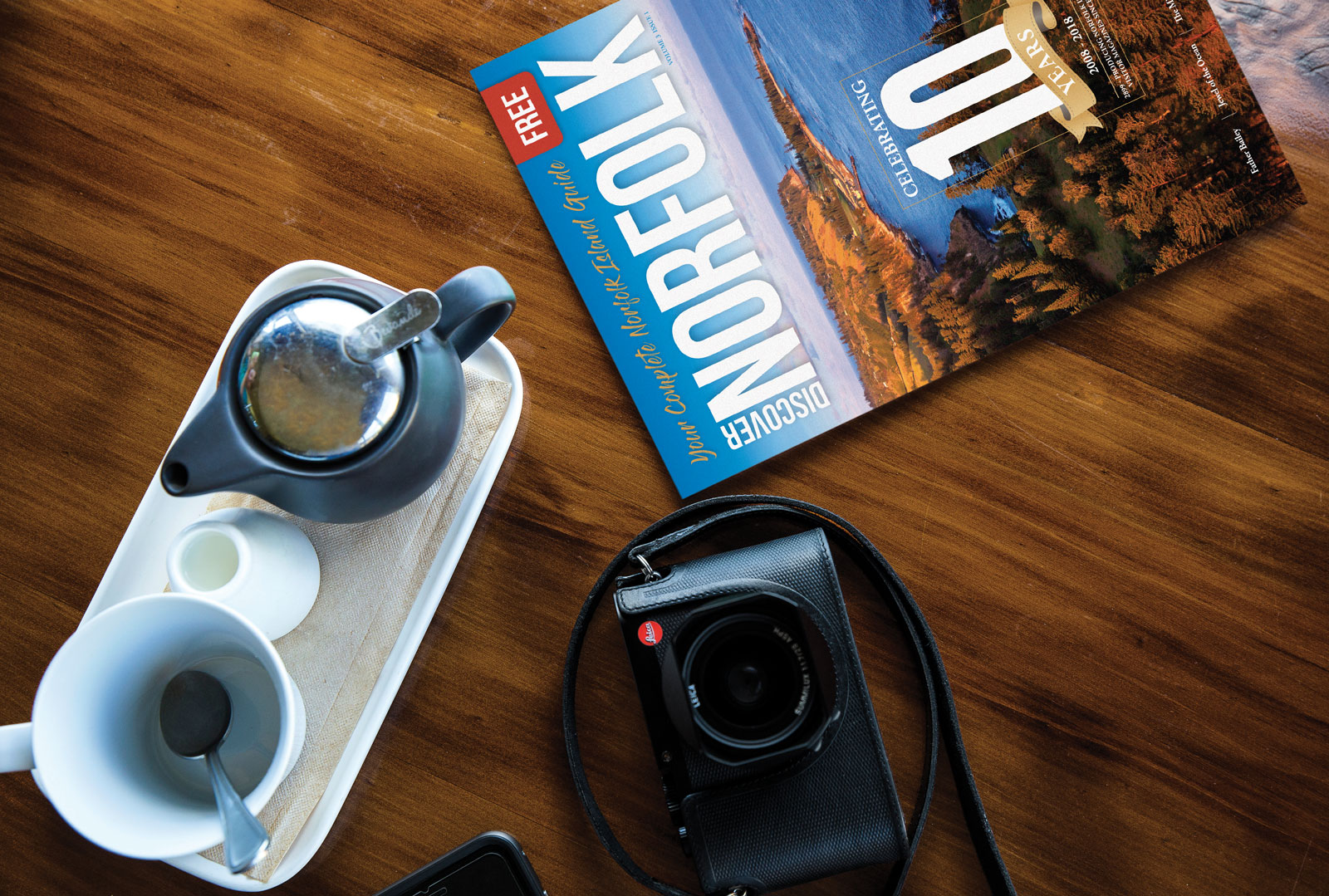Home » All Articles » Spotlight on Phillip Island: The Green Parrot conservation project
Spotlight on Phillip Island: The Green Parrot conservation project

As seen from Norfolk Island, Phillip Island, about six kilometres to the south, looks rather barren. While the vegetation is spreading and covering more of the island each year, the question posed by the Green Parrot Conservation Team was whether there is enough food on the island to support a population of the Norfolk endemic Green Parrot Cyanoramphus cookie.
This question was the subject of botanical surveys on the island in 2015. A small team working with Parks Australia found members on hands and knees sifting through the ground litter below Pine trees, counting small seeds on Flax plants and straining eyes skyward to see whether the taller Pines held cones. All of this activity was aimed at determining if the island supported enough food to be able to introduce some Norfolk Island Green Parrots to Phillip Island. This is one part of a larger project studying the Green Parrot before any thought can be given to taking the birds to Phillip Island; these studies include biological, behavioural, foraging and habitat investigations.
The Green Parrot Conservation Project is an exciting program to translocate a small number of Green Parrots from Norfolk Island across to Phillip Island to establish a second population of this endangered bird. Should anything unthinkable happen, and the birds on Norfolk Island become seriously threatened, a backup population on Phillip would be essential for the future of this species.
The survey team spent five days on Phillip Island to investigate the food resources on the island. This included plants known to be eaten by the Parrot on Norfolk Island, as well as other plants that could be potential food plants.
Two major food plants utilised by the Green Parrot on Norfolk Island and that occur on Phillip Island are the Norfolk Island Pine Araucaria heterophylla and the introduced African Olive Olea europaea. Both were targeted during the surveys. Other smaller plants that may provide food include the seeds and possibly shoots/flowers of the Flax Phormium tenax and the sedge Moo-oo Cyperus lucidus.
One of the highlights of the surveys on Phillip Island was the unexpectedly high number of pines now growing on the island and the abundance of Pine seeds. In all, 502 pine trees were counted on the island, ranging from saplings to a handful of original pre-European trees; 10 percent of these Pines were holding cones. At the time of the survey the food resource held by the trees was estimated to be over 200,000 seeds. Fallen seed on the ground is likely to account for a similar number, as seeds accumulate on the ground over time and are also eaten by the Parrot.
The African Olive is a major weed on both Norfolk Island and Phillip Island, forming dense thickets in valleys on both islands. Each plant can produce thousands of purple-coloured fleshy fruit containing seeds and is known to be an important food for the Parrot on Norfolk Island during the cooler months. While control measures eliminate this shrubby weed on parts of Phillip Island, there will be plenty of Olive food for the Parrot into the foreseeable future.
Other requirements of the parrot are nesting hollows and a source of drinking water. While nesting hollows in the few old White Oak trees on Phillip Island may be suitable, artificial nesting hollows can be constructed and installed there; these have been proven to be successful on Norfolk Island. Water needs can be met by catching and holding rainwater. Consideration must also be given to potential predators, but fortunately neither rats nor cats occur on Phillip Island so this is probably not a major consideration in introducing Green Parrots.
The studies on Phillip Island are part of a broader study of the Green Parrot and its ecology. Other investigations are continuing on the food eaten by the Parrot and preferences across the year in different seasons, nesting habits, chick survival rates and tracking Parrots with transmitters to determine their home range and movements. Rat-baiting in the National Park on Norfolk Island is also aimed at helping the Parrot by eliminating an important predator from nesting areas. Feral cats are also on the ‘hit list’ for elimination. All this work is producing excellent information for the conservation program that is already resulting in positive actions and an increase in the Green Parrot population.
Future programs include the establishment of a plant nursery on Phillip Island to provide local plants for forest rehabilitation in suitable valleys on the island. Eventually, it is proposed to establish a specialised aviary on Norfolk Island and a similar one of Phillip Island to aid the translocation of young Green Parrots. Introducing recently fledged birds should result in them imprinting on Phillip Island rather than wanting to fly back to Norfolk Island. Careful planning and a good knowledge of the birds’ habits and foods are essential if the project is to be successful. With the recent work on Norfolk Island and Phillip Island, the project is beginning to establish a firm basis upon which to be able to confidently move forward with the first translocations to Phillip Island.
The success of the project will depend upon accurate ecological and environmental information on the Green Parrot and its habitat. With the help and support of many organisations and individuals, the prospect of the project reaching a successful conclusion is being maximised.
____
Image Credit: Robin Nisbet
www.robinnisbet.com
____
Article content disclaimer: Article first published in YourWorld, Volume 06 Issue 01, 2016. Please note that details of specific travel, accommodation and touring options may be outdated. References to people, places and businesses, including operating days and times may be have changed. References to Government structure and Government businesses/entities may no longer be applicable. Please check directly with businesses and/or Government websites directly rather than relying on any information contained in this article before you make travel arrangements.


